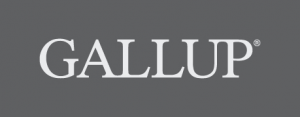GALLUP

Economic Confidence Index Declines in the Middle East
Confidence remains buoyant in Asia
by Justin McCarthy
This article is part of a weeklong series focusing on how people worldwide answer some of today’s most pressing questions about employment and the economy.
WASHINGTON, D.C. — Gallup’s global Economic Confidence Index stood at +11 in 2013, similar to the +12 measured in 2012. However, stable confidence at the global level masks dramatic declines in the Middle East and North Africa (MENA) region, where the index fell 16 points to -33.

Gallup’s Economic Confidence Index is based on the combined responses to two questions: the first asking individuals to rate economic conditions in their country today, and the second, whether they think economic conditions in the country as a whole are getting better or getting worse.
Gallup calculates the Economic Confidence Index by adding the percentage of people rating current economic conditions ([“excellent” + “good”] minus “poor”) to the percentage saying the economy is (“getting better” minus “getting worse”), and then dividing that sum by two. The Economic Confidence Index has a maximum value of +100 and a minimum value of -100. Values above zero indicate a more positive than negative view of the economy, values below zero indicate net-negative views, and zero indicates that positive and negative views are equal.
Confidence remained buoyant and highest worldwide in Asia, with an index score of +28. In addition to Asia, index scores were positive in the former Soviet Union (+3), the Americas (+1), and sub-Saharan Africa (+1), but not by much. Sub-Saharan Africa saw the largest gain in its index reading between years, climbing 10 points from its 2012 score. Confidence in the European Union remained flat, but still the most negative in the world at -36.
Scores Drop in the Middle East and North Africa Region
The MENA region, outside of Gulf Cooperation Council member states, saw its index score plummet 16 points between 2012 and 2013 as the civil war in Syria raged on and political instability continued in Egypt. Four countries, including Syria and Egypt, saw double-digit losses; Egypt’s index fell 40 points prior to President Mohamed Morsi’s ouster in July.
Both the current conditions and future outlook components of the Economic Confidence Index reveal economic insecurity in the region last year. When asked about the current conditions of their respective country’s economy, one in five (20%) residents of the MENA region said economic conditions were “excellent” or “good,” compared with nearly half (46%) of those in the region who said conditions were “poor.” This resulted in a net current conditions score of -26.
Residents of the MENA region were even glummer about the future of their economies. Less than a quarter (23%) said conditions were improving, while more than half (56%) said they were getting worse, resulting in a net economic outlook score of -33.
Lebanon (-71) and Egypt (-70) had the lowest economic confidence ratings in the MENA region, followed by Syria (-54) and the Palestinian Territories (-51). Morocco (+20) was the only country in the region to come out positive on the index.

Asia Continues to Lead on Economic Confidence Globally
Economic confidence is highest in Asia, where more than four in 10 residents (41%) feel their economy is “excellent” or “good.” Asians are even more confident in the future of their economies, with more than half (54%) saying conditions are getting better and less than a quarter (23%) saying they are getting worse.
China leads all other nations in the region by far, at +68. Growth had been slowing in recent years as the country continues to transition into a less export-oriented and more consumer-driven model for economic growth. Chinese confidence in the economy is crucial for the nation as it implies consumers will be more willing to spend their money as opposed to saving as they have in the past.
Following China are Cambodia (+54), Vietnam (+36), Myanmar (+33), and Sri Lanka (+32). Six countries — Japan (-2), Nepal (-8), Afghanistan (-10), South Korea (-21), Taiwan (-42), and Pakistan (-44) — came out negative on the index.
Notably, however, Japan has climbed 54 points since its dismal 2012 index score of -56, which may reflect Japanese hope in Prime Minister Shinzo Abe’s plans to reshape the country’s economy.

Bottom Line
Though economic confidence appears stable at a worldwide glance, some large yearly fluctuations are taking place in the Middle East. In Europe, confidence is continually gloomy, as is residents’ outlook on the job market. Buoyant confidence in Asia, meanwhile, continues to account for the stability in the overall index score. Given that Southeast Asia has become one of the world’s most economically dynamic regions, and that India’s recent election has likely boosted economic confidence among many of its 1.2 billion residents, Asia may be an even greater stronghold of economic confidence in 2014.
The data in this article were generated from Gallup Analytics. For complete data sets or custom research from the more than 150 countries Gallup continually surveys, please contact us.
Survey Methods
Results are based on telephone and face-to-face interviews with approximately 1,000 adults in each country, aged 15 and older, conducted in 2012 and 2013. For results based on the total sample of national adults, the margin of sampling error ranged from ±2.1 percentage points to ±5.6 percentage points at the 95% confidence level. The margin of error reflects the influence of data weighting. In addition to sampling error, question wording and practical difficulties in conducting surveys can introduce error or bias into the findings of public opinion polls.
For more complete methodology and specific survey dates, please review Gallup’s Country Data Set details.






